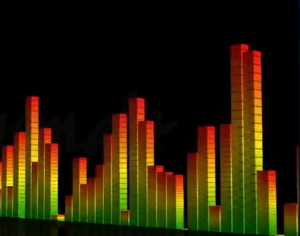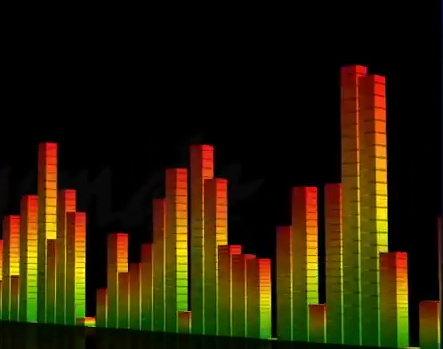Literally meaning ‘hatred of sound,’ misophonia is a rare condition that is marked by occurrence of flight, anger, disgust, hatred and other negative emotions upon exposure to certain types of sounds. Such sounds may be soft of loud. Also known as selective sound sensitivity syndrome, the origin of the condition is believed to be neurological. The term misophonia was coined by American neuroscientists Margaret Jastreboff and Pawel Jastreboff.
Symptoms of Misophonia
Some of the common signs and symptoms of misophonia are listed below:
- Exposure to any kind of trigger sound can cause the patient to immediately experience a negative emotion reaction. Such response can be minor annoyance or mild discomfort or it can be uncontrolled panic or rage.
- A person with misophonia may become defensive, agitated or offensive after encountering a sound from trigger set. The patient may act out, or move away from the distressing sound, or become angry or full of rage and express it at the source.
- Some patients may experience the symptoms of fight or flight reactions like muscle tension, sweating, or a rapid heartbeat.
- People who are closest to the patient often tend to provoke the worst sound triggers. Thus, patients may experience relationship problems in addition to elevated stress levels.
- In some cases of misophonia, affected people may engage in mimicry of the visual and auditory triggers. This has a calming effect on them, reduces the stress levels, and makes them feel better. The action of mimicry is typically non-conscious and automatic.
- People with misophonia may also avoid venturing to unknown areas or to certain places because they think or know that such places with have the trigger sounds. The same would be the case with school or workplaces that do not change according to the needs of the patient. This can result in social and economic problems.
- In extreme cases, the patient may completely withdraw from any kind of social contact and isolate himself/herself from contact with even family and friends so as to avoid any kind of exposure to the offending sounds.

Triggers of misophonia
Some of the triggers that cause misophonia reactions in patients include the following:
- Eating and oral sounds: Smacking, chewing, burping, sipping, kissing sounds, sucking, gulping, nail biting, licking, slurping, spitting, swallowing, flossing, jaw clicking, lip smacking, tooth sucking, grinding teeth, brushing teeth, wet mouth sounds, ‘ahh’ sounds after drinking, scraping of teeth on plate or silverware, throat clearing, chewing gum and popping, talking when food is in the mouth, and crunching sounds when eating hard or crunchy foods.
- Vocals: Nasal voices, humming, sibilance sounds, muffled talking, bad singing, whistling, singing, whisper-like soft voices, repeated use of fillers or words like ah and um, and gravelly voices.
- Nasal or breathing sounds: Groaning, soft or loud breathing or talking, grunting, snorting, nose whistling, screaming, snoring, sniffling, yawning, sneezing, congested breathing, wheezing, hiccups, and raspy voices.
- Animal sounds: Barking dogs, cricket sounds, birds chirping, or frog croaking, and cats or dogs tapping claws or drinking, licking, slurping, whining, eating, or scratching themselves.
- Sounds associated with bodily movements: Shuffling or tapping feet, dragging feet, finger snapping, joints or knuckle cracking, clipping or biting nails, and sounds of flip flops or heels.
- Baby sounds: Babies babbling, crying, yelling kids, or baby talk used by adults.
- Environmental sounds: Clattering dishes, ticking clocks, ACs, rattling change, cellphone ringtone, refrigerators, bouncing balls, chain saws, writing sounds, squeezing of water bottles, paper tearing or rustling, lawnmowers, clicking pen, slamming windows or doors, car beeping or honking, loud radio or TV, and leaf blowers.
- Other trigger sounds that cause misophonia responses in patients include dull music or bass sounds, or TV sounds, or muffled voices of people through walls; click sounds of remote, texting, mouse, keyboard; and Rustling, rubbing, opening, or crinkling of plastic bags or food packages.
- Visual triggers: Twirling of hair, recurrent body or foot movements, fidgeting, repetitive jaw movements, and movements observed from the corner of the eye.
Causes
The exact cause of misophonia is not known.
Some fMRI brain and neurological studies of people with misophonia deduce dysfunction or abnormal interpretation or understanding of the neural signals present in the insular cortex and anterior cingulate cortex, areas which are responsible for processing pain, anger, and sensory data.
Other researches have indicated at central nervous system structure dysfunctions, while still some other studies have hypothesized that misophonia is associated with or forms via classical conditioning instead of brain anomalies.
Treatment of misophonia
- Misophonia and its symptoms can be managed with the help of family, friends, and co-workers via reduction of trigger sounds incidences and creating changes in the environment.
- The best and most popular treatment for misophonia is adding noise to the environment of the patient. Thus, the presence of additional sounds will make it more difficult for the patient to detect or hear the trigger sounds. The two sound generators using treatment protocols are the ‘Tinnitus Retraining Therapy’ and the ‘Misophonia Management Protocol.’
- Some studies have shown that counter-conditioning via Neural Repatterning Technique as well as Cognitive Behavioral Therapy can also help successfully reduce the instances of misophonia reactions.

